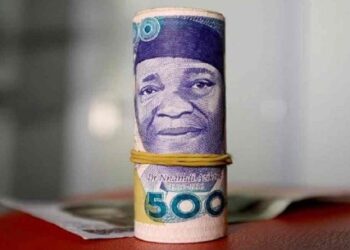Nigeria’s Brass River, Bonny Light, and Qua Iboe are trading above $85 a barrel, a dollar higher than the active Brent contract. However, this increase hasn’t translated into more income generation for Nigeria amid falling output.
Bonny Light, named after the city of Bonny, continually attracts premium status in the global energy market. This black, viscous hydrocarbon is in high demand due to its low sulfur content compared to other blends, its minimal impact on refinery equipment, and its reduced environmental impact through its byproducts. It has a sulfur content ranging from 0.14% to 0.16%.
Oil prices rose on Thursday, bouncing back from three days of losses, amid expectations that the lower levels may prompt the U.S., the world’s largest crude consumer, to start replenishing its strategic reserve, thus providing support to prices.
Brent crude for July gained 0.7% to reach $84.02 a barrel on Thursday morning, while U.S. West Texas Intermediate also rose by 0.7% to $79.53 a barrel.
Nigeria’s Oil outlook dim in April
Due to a recent wave of disturbances in the Niger Delta that have impacted export terminal supply, Nigeria’s main crude export grade, Bonny Light, is still subject to force majeure.
Although OPEC had not officially released the April data yet, separate surveys by Reuters and Bloomberg highlighted that Nigeria saw a decrease based on shipping data and information from industry sources.
Such surveys project that the West African nation might have recorded a diminishment in oil generation by as much as 50,000 barrels per day during the month, or a total underproduction of 1.5 million barrels for the period under consideration.
In all, OPEC pumped 26.49 million barrels per day during the just-ended month, down 100,000 barrels per day from March’s revised figure, with the biggest yield reductions coming from Nigeria and Iran. Power blackouts caused by the Bonny generation stream also confirmed that Nigeria pumped below its target.
Within the Middle East, there are emerging desires for a ceasefire understanding between Israel and Hamas, following a renewed push driven by Egypt.
Saudi Arabia is anticipated to have recorded an uptick in output, with small increases also noted from Congo, Equatorial Guinea, and Gabon. According to OPEC’s published schedule, the official Monthly Oil Market Report for April will be released on May 14. Nigeria’s upstream regulator releases theirs around the same time.
The Energy Information Administration highlighted that crude stocks were at their highest point since June. Citi anticipates OPEC+ to maintain output cuts through the second half of the year, as it meets on June 1.
According to analysts at Citi Research, OPEC+ is expected to maintain output cuts for the remainder of the year during its meeting on June 1. However, if prices reach the $90-100+ range, OPEC+ may ease cuts, setting a tentative limit for oil prices, as mentioned in a note.
Meanwhile, the U.S. Energy Information Administration (EIA) reported that, contrary to analysts’ polled expectations of a draw of 1 million barrels, crude inventories increased by 73 million barrels to 460 million barrels in the week ending April 26.






















